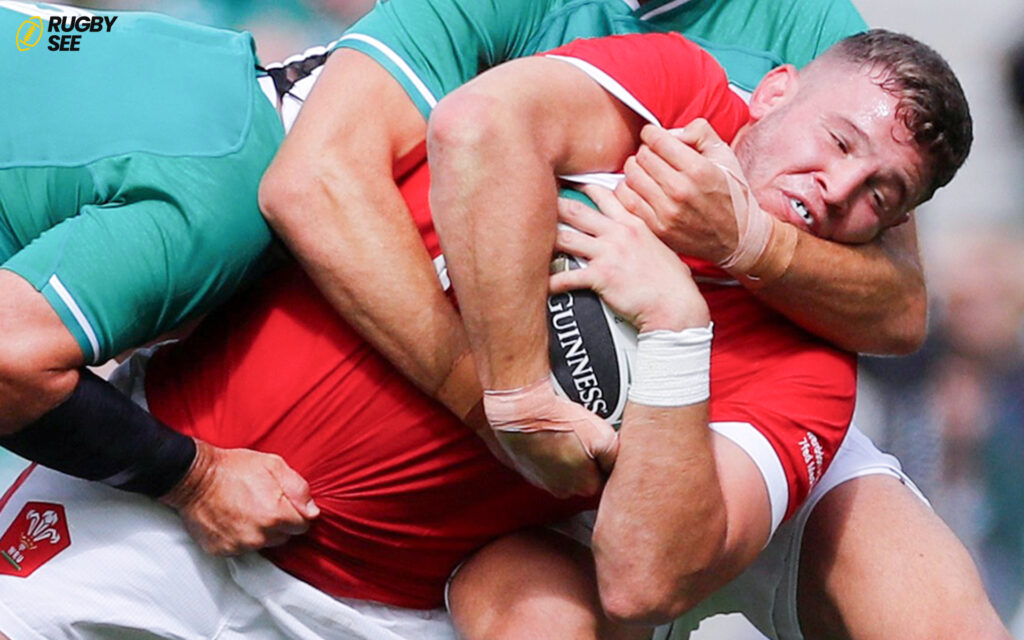In the realm of rugby, a sport renowned for its physical demands and intense gameplay, the question of optimal training methods is ever-present. Among the various strength exercises, the deadlift stands out for its potential benefits for rugby players. This article from Rugbysee explores why incorporating deadlifts into a rugby player’s training program can be game-changing, examining the benefits of the exercise, safety considerations and how it translates to on-field performance.
The Deadlift | A Foundation of Strength Training
The deadlift is a powerhouse exercise that targets multiple muscle groups simultaneously, including the glutes, hamstrings, lower back, core, and forearms. This comprehensive engagement makes it an effective strength-building tool, crucial for athletes in a physically demanding sport like rugby.
Why Rugby Players Should Deadlift
Enhanced Power and Explosiveness
Rugby requires bursts of power for tackling, sprinting, and scrummaging. Deadlifting improves the fast-twitch muscle fibers responsible for these explosive actions, directly translating to improved performance on the field.

Injury Prevention
A well-structured deadlift routine strengthens the muscles around critical joints, including the knees, hips, and lower back. This reinforcement can reduce the risk of common rugby injuries, ensuring players spend more time on the field and less on the sidelines.
Improved Core Stability
The core plays a pivotal role in transferring power from the lower body to the upper body during play. Deadlifting enhances core strength and stability, essential for maintaining balance and effectiveness in tackles and during contact situations.
Integrating Deadlifts into Rugby Training
Incorporating deadlifts into a rugby player’s training regimen should be done thoughtfully, with attention to form, frequency, and recovery. Starting with lighter weights to master technique before progressively increasing the load can prevent injury and ensure maximum benefit.
Safety Considerations
While deadlifts offer numerous benefits, they must be performed correctly to avoid injury. Proper form, including a neutral spine, correct hip hinge, and not overloading the bar, is crucial. Rugby players should work with strength and conditioning coaches to tailor their deadlift program to their specific needs and physical condition.
Deadlift Variations for Rugby Players
Different deadlift variations can target specific aspects of strength and performance. For instance, the sumo deadlift places more emphasis on the legs and hips, while the Romanian deadlift focuses on hamstring and lower back strength, both beneficial for rugby players.

The Role of Deadlifts in a Comprehensive Training Program
Deadlifts should be part of a balanced training program that includes aerobic conditioning, agility training, and sport-specific drills. This holistic approach ensures that the strength gains from deadlifting translate effectively into rugby performance.
Customization for Position-Specific Requirements
Rugby positions vary greatly, from the explosive sprints of the backs to the grueling physicality of the forwards. Tailoring deadlift training to suit these specific needs can enhance its effectiveness. Forwards might focus on heavier lifts to build the sheer strength required for scrummaging and rucking, while backs could benefit from lighter weights and higher velocity to improve sprint speed and agility.
Periodization and Recovery
Integrating deadlifts requires careful consideration of training cycles and recovery periods. Periodization—structuring training into phases of varying intensity—can help rugby players maximize strength gains while minimizing overtraining and injury risks. Incorporating adequate recovery and mobility work ensures that the muscles and joints remain healthy and responsive.
The Mental and Tactical Benefits
Beyond the physical benefits, deadlifting can also offer mental and tactical advantages. The discipline required to maintain form and the challenge of progressively heavier lifts can fortify a player’s mental toughness, translating into better focus and resilience on the field. Moreover, the confidence gained from improved physical strength can be a significant tactical advantage, instilling a sense of intimidation and presence in confrontations.

Incorporating Technology and Expertise
Leveraging technology, such as video analysis for form correction and wearable devices for tracking progress, can enhance the benefits of deadlifting in rugby training. Furthermore, consultation with strength and conditioning experts who understand the unique demands of rugby can provide invaluable insights, ensuring that deadlift routines are both safe and effectively tailored to the sport’s requirements.
The Balance with Rugby-Specific Skills Training
While the physical benefits of deadlifting are clear, it’s crucial to maintain a balance with rugby-specific skills training. Strength gains should complement, not detract from, essential skills like passing, kicking, and strategic gameplay. Integrating deadlifts should therefore be part of a well-rounded training program that nurtures all facets of a rugby player’s development.
For rugby players looking to enhance their strength, power, and injury resilience, deadlifting can be a highly beneficial addition to their training arsenal. By improving core stability, leg strength, and overall explosiveness, deadlifts help build the physical foundation necessary for rugby’s rigorous demands. However, like any training exercise, deadlifts should be performed with proper technique and under the guidance of experienced professionals to maximize benefits and minimize injury risks. With the right approach, deadlifting can help rugby players achieve new heights in their athletic performance.










